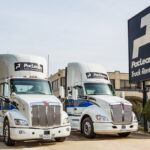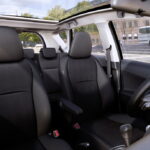Are Subarus Expensive to Fix? 7 Questions Answered
Subaru is one of the most popular brands in the world, but is it expensive to maintain?
In this article, we will check it out!
Are Subarus Expensive to Maintain?
Subaru when compared to its Japanese rivals like Toyota and Honda is about 35% more expensive to maintain, mostly because it is less popular.
Some car brands are more expensive than others to purchase, but owning a vehicle is all about the normal yearly fuel and maintenance costs. Subaru’s give you great fuel consumption figures, a lot of standard technology, comfort, and practicality but they are expensive to maintain in the long term.
Also read: Subaru: Which Model Hold the Most Value?
What are the Most Common Problems of Subaru?
- Faulty fuel pump leading to stalling.
The average price of a repair depending on your Subaru model ranges from $300-$900.
A faulty fuel pump can lead to an engine stall, which might become a safety issue if the vehicle was in motion
The fix is the replacement of the faulty fuel pump.
- Engine computer issues
The average price of a repair is about $900.
In some Subaru, the engine control unit has the potential of keeping the ignition coil on even after shutting off the engine. This issue could lead to blown out fuses, and short circuit in the ignition system.
A possible fix for this is the replacement of both the front exhaust pipes if possible and the ignition coils or a software update from a Subaru dealer.
- Faulty positive crankcase ventilation.
PCV valve replacement will range from $50-$250.
In some Subaru models particularly the Subaru Crosstrek and the Impreza, the aluminum positive crankcase ventilation valve had the potential to fall apart.
For a fix, if the valve had already broken, and in a worst-case scenario where the parts vanished within the engine, the whole engine was to be replaced.
- Faulty head gasket issues leading to engine oil and coolant leaks, and excessive oil consumption.
The average price for a repair is about $1000.
If you’ve had your Subaru for about 75000 miles, you’ll notice a high oil consumption rate from the engine which indicates a faulty head gasket.
- Issues with the air conditioning O-rings.
The average cost of fixing the A/C is about $245.
You will notice this particular issue on a hot and humid day, such as during the summer, Instead of the A/C unit blowing cold air, the air is usually warm a sign of worn-out O-ring seals in the A/C unit. Worn-out O-ring seals lead to the refrigerant leaking out, thus other than replacing the seal itself, the refrigerant also has to be refilled.
Also read: Japanese vs European Cars Comparison (Reliability, Price, etc.)
Are Subaru Parts Expensive?
These are the Subaru parts that need replacement from time to time.
- Spark plugs- Depending on the model and model year, spark plugs can range from $60 to $300.
- Battery – Depending on the power rating, size, and quality, vehicle batteries range from $45 to $200.
- Brake Pads – Depending on the Subaru model, brake pad replacements can cost from $150-$450 per axle.
- Lights – Ranges between $23 and $680.
This depends on which type of lights are being replaced from the fog light bulbs to the main headlights, thus the great degree of variation on price. Also depending on your vehicle’s model year, the technology behind the lights also directly influences the price since halogen bulbs on older Subaru vehicles are cheaper than HID or LED bulbs.
- Air conditioning systems O-rings- Average cost of replacement $245.
But this is very much dependent on your location, and the availability of replacement parts.
- Head Gaskets – Repair of the head gasket can range from $1500 to $1800.
In case of any additional work other than head gasket job such as timing belt, water pump, oil seals, etc., the repair job might be in the range of $2200 to $2700.
- Front Suspension Bushings – Replacement will cost from between $105 to $450, inclusive of the labor.
- CV joints and CV axle boots– The cost ranges from $168 to $799.
In some instances, the CV joint or the CV boot might be the only thing to fail but it is advisable to replace the entire axle. The cost above is inclusive of both the replacement parts and the labor involved in replacing the parts.
- Axle bearings- Average cost is about $350 per wheel.
- Timing Belt – The cost for replacing the timing belt ranges from $360 to $1000 inclusive of the part and the labour involved.
Also read: 3 Subaru Engines to Avoid (They Will Ruin You)
How Much can You Save on Replacements Parts by Using Second-Hand Replacement Parts?
Using used replacement parts can save you up to 70% of the cost of buying a new item. A good example is a Subaru Impreza brake master cylinder for the model year 1993-2001. A used part retails for $56, but a new part will retail for $172.
Used or second-hand parts are those parts harvested from accident vehicles or retired vehicles. When compared to aftermarket not original equipment manufacturers, they are often of better quality.
But something good to note is that these second-hand parts should be from a reputable source to prevent getting scammed. These parts are cheaper than new aftermarket parts, are of good quality, and are available.
For replacement parts that normally need replacing such as the axle and CV joints, it is more advisable to go for new parts since aftermarket parts already have wear and tear on them and one cannot be sure of how long they’ll last on your vehicle.
For those vehicles that are no longer in production such as those from the early 2000s, after-market parts for major things like the gearbox or engine unit are the only way to go. You get the assurance of getting that is original, even though it already has wear and tear or mileage on it. Also for older Subaru models, it is better to get used replacement parts than constantly trying to repair and fix what is already broken, these parts will give you peace of mind for future travels with your Subaru.
Also read: 15 Cars that NEVER Rust (100% Galvanised)
Do Subarus rust often?
Subaru’s have a reputation for having issues with rust and corrosion. It’s a problem in the cold climate. When salt from the road isn’t washed properly, it may lead to rust issues.
Most people purchase Subaru because of the standard all-wheel-drive system that comes in most Subaru vehicle models. These individuals such as in North America live in cold-weather regions, where the snow is a challenge drivers have to face during the winter season.
During winter, the road is usually sprayed with salt to thaw out the snow and clear roads for usage, this salt mixture gets sprayed on vehicles and if not washed properly leads to some serious rusting on the underside of the vehicles.
In 2013, Subaru recalled the Legacy and the Outback due to leaking brake fluid, which was a result of corrosion on the brake lines.
Trending Video: How to Easily Bring Back to Life any Old Car Battery and Save Tons of Money (click to watch)
What are the Most Reliable Subarus?
For 2021, according to Consumer Reports the most reliable Subaru models are the Forester and the Crosstrek. Subaru overall ranks eighth out of twenty-six rated automakers in terms of reliability.
But if you‘re strapped for cash and can’t buy a new model from Subaru, there are several older models that have been and are still reliable. The Legacy model from 2015 was even awarded Canadian car of the year for outstanding quality.
For those who want a sporty experience but without much has the WRX Impreza from the 2000s. If well-kept holds up well even today.
Which Subarus Should You Avoid?
There are several Subaru models to avoid when shopping for a used Subaru. The 2001-2009 Subaru Forester, 2001-2009 Subaru Outback, and the 2006-2008 Subaru Impreza.
The issue with these Subaru models is the engine that powers them, the EJ25 2.5 liter boxer engine. The main issue being head gasket issues. The layout of the Boxer engine means when the engine is turned off, fluids pool next to the head gasket instead of draining away, which over time the acid tends to eat away the seals.
Another model to avoid is the 2013 Subaru XV Crosstrek. In 2013 this was an all-new model from Subaru and it suffered from several drivetrain and engine issues. The vehicle suffered from engine stalling and CVT issues.
The Ascent which is Subaru’s three-row crossover SUV was introduced in 2019, and this model year has had several issues with its automatic transmission.
Also read: Subaru 2.5 Engines: Typical Problems (with Costs)
What are the Best Alternatives for Subaru?
In terms of brands, some very good alternatives to Subaru vehicles include Mazda, Honda, Toyota, Hyundai, and Kia vehicle brands.
Subaru is not a luxury brand since they offer customers reliability, comfort, safety, practicality all at an affordable price bracket. The best alternatives to Subaru are more or less its Japanese and Korean counterparts since European brands are usually luxury offerings except for automakers like VW.
All the same, one thing that has kept Subaru’s relevant and popular is the inclusion of their symmetrical all-wheel-drive systems to nearly all the vehicles in their lineup. For customers who live in rugged areas or areas that experience snow a lot of times in the year, Subarus offer the best all-around vehicles that help out with the conditions.
And even though the competition is catching up, in terms of all-wheel drive capability at an affordable price, little out there beats Subaru even though they are expensive vehicles to maintain.






